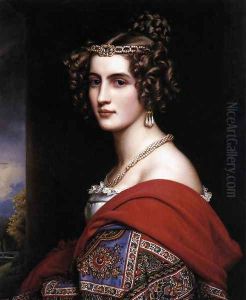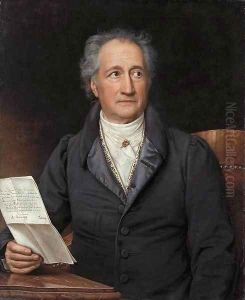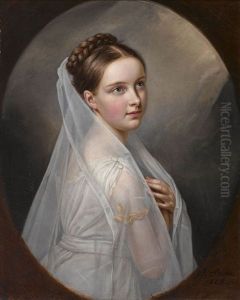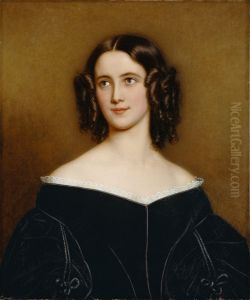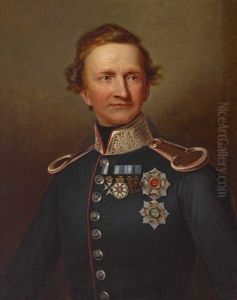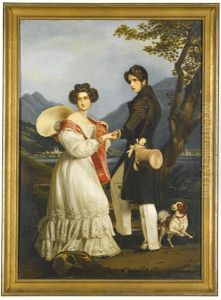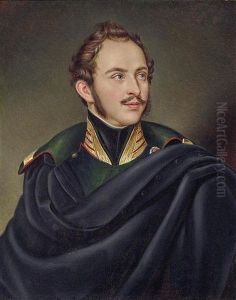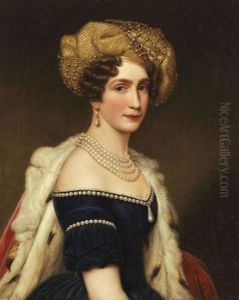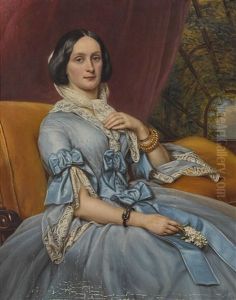Joseph Karl Stieler Paintings
Joseph Karl Stieler was a German painter known for his portraits of notable figures of his time, including kings, queens, and other members of the nobility. Born on November 1, 1781, in Mainz, Germany, Stieler showed an early interest in art and was initially taught by his father, who was an engraver and court painter. His talent soon became apparent, and he went on to study at the Academy of Fine Arts Vienna, where he honed his skills and developed his distinctive style.
After completing his studies, Stieler embarked on a journey through Italy, spending time in Rome and Naples, where he was influenced by the works of classical artists. This period was crucial for his artistic development, as it allowed him to study the masters of the Renaissance and Baroque periods, which significantly influenced his approach to portraiture.
Stieler's career took a significant turn when he returned to Germany and began working for the Bavarian court. In 1820, he was appointed court painter by King Maximilian I Joseph of Bavaria. This position provided him with a steady stream of commissions and allowed him to establish himself as one of the leading portrait painters of his time. Among his most famous works is the Gallery of Beauties, a collection of portraits commissioned by King Ludwig I of Bavaria, featuring 36 women from various social backgrounds who epitomized the ideal beauty of the era.
Stieler's portraits are characterized by their meticulous detail, vibrant colors, and the ability to capture the personality and essence of his subjects. His work represents a bridge between the neoclassical and romantic styles, blending precise realism with a sense of idealized beauty. Stieler's influence extended beyond his lifetime, as his portraits have become valuable documents of the era's cultural and social history.
Joseph Karl Stieler passed away on April 9, 1858, in Munich, Germany. Today, his work is celebrated for its artistic merit and historical significance, with many of his portraits housed in museums and collections around the world. Stieler's legacy as a master portraitist continues to be appreciated by art historians and enthusiasts alike.
